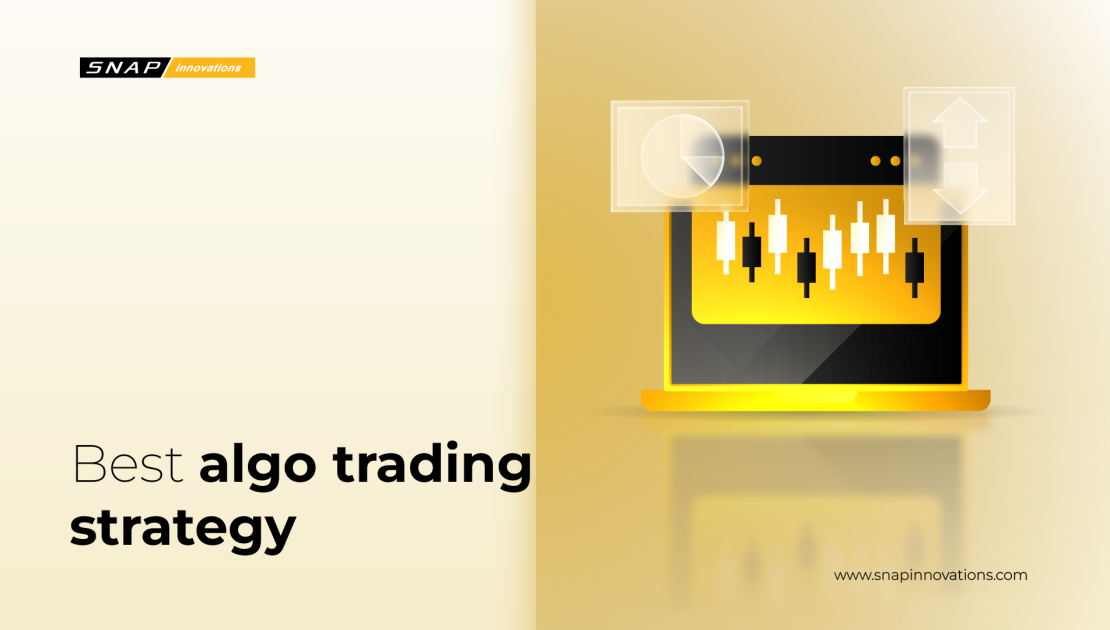As we step into 2024, algorithmic trading continues to dominate the financial markets, reflecting its importance in executing high-speed and sophisticated trading strategies. Experienced financial professionals understand that leveraging advanced algorithms can significantly enhance trading performance by capitalizing on minute, fleeting opportunities that are often invisible or inaccessible to human traders.
The landscape of algo trading is ever-evolving, with technologies such as artificial intelligence (AI) and machine learning (ML) paving new paths for developing more efficient and adaptive strategies. These technologies not only automate routine trading tasks but also improve decision-making through predictive analytics and real-time data processing. This shift is crucial in today’s dynamic markets where speed and precision are paramount.
This article explores the seven best algo trading strategies that are poised to make significant impacts in 2024. Each strategy is tailored to exploit specific market dynamics and is designed with the current technological advancements in mind. Whether you are looking to refine your existing models or seeking new avenues for investment, understanding these strategies will provide you with a competitive edge in the sophisticated arena of algorithmic trading.
7 Best Algo Trading Strategy to Know in 2024

In the dynamic world of financial markets, algorithmic trading has emerged as a powerful tool for executing trading strategies with speed, precision, and efficiency. As we navigate the ever-changing landscape of 2024, staying abreast of the most effective algorithmic trading strategies is essential for traders seeking to capitalize on market opportunities. Whether you’re a seasoned quant or an aspiring trader, mastering the right strategies can enhance your ability to navigate volatile markets and achieve consistent returns. Here, we present a curated list of the seven best algorithmic trading strategies to know in 2024, each offering unique insights and methodologies to help you thrive in the fast-paced world of algorithmic trading.
Strategy 1: High-Frequency Trading (HFT) Techniques
High-Frequency Trading (HFT) remains a cornerstone of modern algorithmic trading, utilizing incredibly fast computing power to execute a large number of orders at lightning speeds. HFT strategies in 2024 are characterized by their ability to adapt to volatile markets, using complex algorithms to analyze multiple markets and execute orders based on market conditions that may last only fractions of a second.
Key Components of HFT
- Latency Reduction: The race to zero latency continues to be critical in HFT. Trading firms invest heavily in state-of-the-art infrastructure to minimize delays in order transmission and reception.
- Market Data Analysis: Real-time analysis of market data allows HFT algorithms to make split-second decisions. This includes detailed assessment of market depth, price movements, and other trading signals.
- Order Execution Logic: Advanced algorithms now employ more sophisticated execution logic to determine optimal trade sizes and timing, aiming to minimize market impact while maximizing trade execution efficiency.
Read More: Evolution and Future of Portfolio Trading: From Diversification to Decentralization and Beyond
Adapting Strategies for 2024
The focus in 2024 has shifted towards more sustainable and smart HFT practices. Algorithms are now designed to be more adaptive, learning from past performance to optimize future strategies. Additionally, there is an increased emphasis on compliance and risk management, as regulatory environments become stricter.
By leveraging cutting-edge technologies and continually refining their approaches, HFT traders can maintain their competitive edge in the fast-paced trading environment.
Strategy 2: Statistical Arbitrage
Statistical arbitrage is a sophisticated algo trading strategy that capitalizes on pricing inefficiencies between related financial instruments. This strategy typically involves complex mathematical models and high-speed computation capabilities to identify and exploit these inefficiencies before they disappear.
Understanding the Core of Statistical Arbitrage
- Pair Trading: This involves identifying two historically correlated securities. When their prices diverge, the strategy involves short selling the higher-priced security and buying the lower-priced one, betting that the “spread” between them will eventually converge.
- Basket Trading: Larger scale versions of pair trading, where algorithms manage dozens or hundreds of securities as a single unit, looking for price anomalies across the entire basket.
- Mean Reversion Models: These models predict that prices and returns eventually move back towards the mean or average. This is used in statistical arbitrage by forming the hypothesis that the mean will be the future point of return.
Enhancements in 2024
The application of machine learning has significantly enhanced statistical arbitrage strategies in 2024. These models are now more adept at pattern recognition and can adjust more dynamically to new information, reducing the risk of model overfitting and improving the prediction accuracy of temporary market inefficiencies.
Moreover, increased computational power allows traders to analyze a broader range of data sources, including non-traditional data such as social media sentiment, economic indicators, and even geopolitical events, to inform their trading decisions.
Strategy 3: Algorithmic Scalping
Algorithmic scalping is a trading strategy used by algo traders to capitalize on small price changes. This approach is particularly popular among day traders who execute a large volume of trades quickly to accumulate small profits from each.
Key Features of Algorithmic Scalping
- Speed and Precision: Scalping algorithms are designed for speed. They must execute trades quickly to take advantage of very small price gaps that exist for only a short time.
- High Volume: Scalpers increase their profitability by scaling up the volume of trades. Even minimal profit per trade can result in significant total returns when multiplied across many transactions.
- Low Latency: Low latency is crucial for the success of scalping strategies. Faster data transmission helps to capture opportunities that last only seconds.
Scalping in 2024: Advances and Techniques
In 2024, algorithmic scalping has evolved with the integration of more advanced machine learning algorithms that can predict and react to market movements with greater accuracy. Additionally, improvements in hardware and network technologies have reduced latency further, which is crucial for the effectiveness of this strategy.
Furthermore, regulatory technology (RegTech) solutions are being employed more frequently to ensure that these high-speed trading activities remain compliant with global trading rules, thereby safeguarding the interests of the broader market and maintaining a fair trading environment.
Strategy 4: Momentum Trading Algorithms
Momentum trading algorithms identify and follow existing market trends, capitalizing on the continuation of these trends. This strategy is built on the premise that assets which have performed well in the recent past will continue to perform well, and conversely, assets that have performed poorly will continue to do so.
Principles of Momentum Trading
- Trend Detection: Momentum algorithms analyze price movements and trading volumes to detect strong trends. This can involve the use of various technical indicators like moving averages, relative strength index (RSI), and MACD (Moving Average Convergence Divergence).
- Entry and Exit Points: These algorithms are designed to find optimal entry and exit points within a trend, maximizing potential returns while managing risk exposure.
- Risk Management: Implementing stop-loss orders and adjusting position sizes based on volatility are common risk management techniques in momentum trading.
Innovations in 2024
With advancements in data analytics and machine learning, momentum trading algorithms in 2024 have become more sophisticated. They are now capable of integrating multiple data sources, including global economic indicators and sector-specific news, to better predict and react to market movements.
The integration of sentiment analysis tools has also provided these algorithms with a nuanced understanding of market dynamics, allowing them to anticipate changes in momentum based on investor sentiment derived from news and social media.
Strategy 5: Machine Learning Models in Trading
Machine learning (ML) models are revolutionizing the field of algorithmic trading by providing more accurate predictions and adaptive learning capabilities. These models can analyze large datasets to find non-obvious patterns and insights, which can be used to predict market movements more effectively than traditional models.
Core Applications of ML Models in Algo Trading
- Predictive Analytics: ML models utilize historical data and real-time inputs to predict future price movements. Techniques like regression analysis, neural networks, and deep learning are commonly employed.
- Pattern Recognition: These models excel at identifying complex patterns in data, such as identifying the optimal trading signals in noisy market environments.
- Adaptive Learning: Unlike static algorithms, ML models can improve over time, adapting to new data and market conditions without human intervention.
Advances in 2024
In 2024, the integration of AI and ML into trading algorithms has significantly matured. Enhanced computational resources and improved algorithms allow traders to deploy more complex models, such as those involving reinforcement learning, where algorithms learn optimal actions based on reward feedback loops.
Furthermore, transparency and explainability of ML models have become a major focus, as traders demand a better understanding of how decisions are made. This is crucial for trust and scalability in deploying ML-driven strategies in critical trading operations.
Strategy 6: Mean Reversion Strategies
Mean reversion strategies are based on the assumption that prices and returns eventually move back towards their mean or historical average. This strategy exploits the natural ebb and flow of market prices, betting on the reversion of prices to their average state after a significant deviation.
Key Concepts in Mean Reversion
- Identification of Extremes: These strategies involve identifying when assets are significantly overbought or oversold, which are typically indicators that a reversion is likely.
- Statistical Models: Common tools include Bollinger Bands, moving averages, and standard deviation calculations to determine the historical mean and the variance from this mean.
- Automated Execution: Given the need for precision and timing, algorithms automatically execute trades when predefined conditions are met, ensuring that opportunities are not missed.
Refinements in 2024
In 2024, the refinement of mean reversion models has seen the incorporation of more complex statistical methods and data sources. Algorithms now consider not only price data but also alternative data sets such as economic indicators, consumer sentiment, and even weather data, providing a more holistic view of the factors that may influence the mean reversion of prices.
Moreover, these strategies have been enhanced with adaptive learning capabilities, allowing the algorithms to adjust their parameters in real-time based on current market dynamics, which improves their accuracy and effectiveness.
Strategy 7: Sentiment Analysis Based Trading
Sentiment analysis based trading utilizes advanced algorithms to analyze the mood and opinions expressed in news articles, social media platforms, and financial blogs. By gauging public sentiment, these algorithms predict potential market movements driven by traders’ reactions to information.
Understanding Sentiment Analysis in Trading
- Data Sources: Algorithms scan a wide array of digital content — from tweets and Facebook posts to financial news and blog entries — to gather sentiment data.
- Natural Language Processing (NLP): This technology is essential for interpreting the nuanced language of human emotions. NLP tools assess whether the sentiment is positive, negative, or neutral and measure the strength of these sentiments.
- Real-Time Analysis: Given the rapid change in sentiment, real-time analysis is crucial. Algorithms must quickly process new information as it becomes available to capitalize on short-lived trading opportunities.
Advances in 2024
With the advancements in AI and computational linguistics, sentiment analysis algorithms in 2024 have become even more sophisticated. They can now better understand and interpret the context and complexities of language used in various sources, including sarcasm and implied meanings.
Additionally, integration with other trading strategies has become more prevalent. For example, sentiment analysis is often combined with other technical indicators to confirm trends or signal reversals, enhancing the robustness and reliability of trading decisions.
How to Choose the Right Strategy for You
Choosing the right algorithmic trading strategy in 2024 involves a combination of understanding market dynamics, technological capabilities, and personal trading goals.
As we’ve explored, each strategy offers unique advantages and suits different trading styles and objectives.
Read More: Top 10 Options Exchanges to Know in 2024
Factors to Consider
- Market Knowledge: Understanding the specific market conditions that favor each strategy is crucial. For instance, high-frequency trading requires a robust technological infrastructure and is best suited for markets where speed is a competitive advantage.
- Technological Resources: The effectiveness of your chosen strategy is often tied to the quality of your technology. Strategies that rely heavily on real-time data analysis, such as sentiment analysis or high-frequency trading, require significant computational power and data access.
- Risk Tolerance: Each strategy comes with its own risk profile. Mean reversion strategies, for example, may carry lower risk compared to high-frequency trading but also potentially offer slower returns. Align your strategy choice with your risk appetite.
- Regulatory Compliance: Ensure that your trading strategy complies with local regulations. The increasing complexity of algorithmic trading has led to tighter regulations, particularly for strategies that might affect market stability, like high-frequency trading.
- Continuous Learning and Adaptation: The financial markets are constantly evolving, necessitating ongoing education and adjustment of your strategies. Engaging with communities, continuing professional development, and constant backtesting are essential to stay ahead.
Conclusion
To successfully implement these strategies, start with a clear understanding of your objectives and capabilities. Utilize simulation and backtesting to gauge the effectiveness of each strategy under different market scenarios. Finally, remain adaptable—what works today may not work tomorrow, and the best traders are those who can pivot quickly in response to changing market conditions.
By carefully considering these factors, you can select and refine the trading strategies that will best help you achieve your trading goals in 2024.


